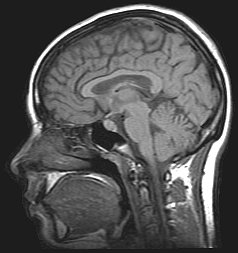Do patients who are in a vegetative state have any awareness of their surroundings? Surprisingly, the answer may be ‘yes’.
Being in a vegetative state (VS) is not the same as being in a coma. Patients in this state are awake, but not aware. They can open their eyes but they lack any sign of cognitive awareness. At least, they don’t show any outward signs of responding to anything around them. According to Haggai Sharon and others from Tel Aviv University and Sourasky Medical Center, it may be a different story under their skulls.
The researchers compared four VS patients with thirteen healthy controls. All underwent fMRI scans while viewing pictures of familiar and unfamiliar faces, including their own faces. In addition, all participants were asked to imagine a parent’s face.
All seventeen people had increased brain activity when viewing the face pictures. They also all showed different activation patterns when viewing familiar faces compared to viewing unfamiliar faces. In particular, the VS patients had activation of their amygdalae (which processes visual information) and insulae (which is involved in recalling emotional memories) just like the normal controls. Finally, all seventeen participants showed ‘robust activation’ in the Fusiform Face Area, indicating that that they were indeed responding to human faces.
Two of the four VS patients later improved slightly (2 and 3 months after the study) and were reclassified as ‘minimally conscious’. This means they could follow simple commands and indicate responses to ‘yes or no’ questions. So, they might have been less brain damaged during the fMRI experiments than was first thought. This is corroborated by the fact that of the four VS patients, only these two showed brain activity during the ‘imagine your parent’s face test’. However, minimally conscious is far from fully functional, and the other two patients remain in the VS category. And all of them seemed able to see faces and to tell familiar ones from unfamiliar ones.
A few caveats are in order. Of course, this was a really small study and there’s no way to know whether these four VS patients were exceptional in some way. Even if they represent typical VS patients, this data doesn’t suggest any different treatment regimens. The people might have been able to see pictures, but they still weren’t communicating anything.
Finally, as with all fMRI studies, the authors have to make sure their data passes the ‘dead salmon’ test. If you don’t make sure you analyze your fMRI data properly, even dead salmon will respond to pictures.

Sharon H, Pasternak Y, Ben Simon E, Gruberger M, Giladi N, Krimchanski BZ, Hassin D, & Hendler T (2013). Emotional processing of personally familiar faces in the vegetative state.
PloS one, 8 (9) PMID:
24086365.

No comments:
Post a Comment